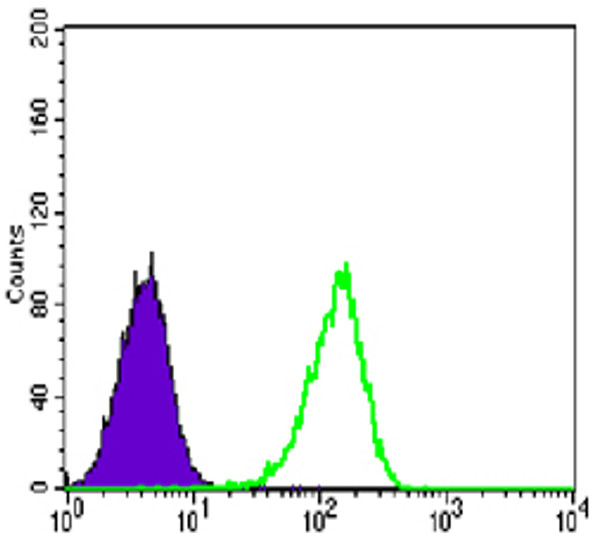| Post Translational Modifications | Auto-methylated on Arg-550. Methylation enhances transcription coactivator activity. Methylation is required for its role in the regulation of pre-mRNA alternative splicing. Phosphorylation at Ser-216 is strongly increased during mitosis, and decreases rapidly to a very low, basal level after entry into the G1 phase of the cell cycle. Phosphorylation at Ser-216 may promote location in the cytosol. Phosphorylation at Ser-216 interferes with S-adenosyl-L-methionine binding and strongly reduces methyltransferase activity. Ubiquitinated by E3 ubiquitin-protein ligase complex containing FBXO9 at Lys-227.leading to proteasomal degradation. |
| Function | Methylates (mono- and asymmetric dimethylation) the guanidino nitrogens of arginyl residues in several proteins involved in DNA packaging, transcription regulation, pre-mRNA splicing, and mRNA stability. Recruited to promoters upon gene activation together with histone acetyltransferases from EP300/P300 and p160 families, methylates histone H3 at 'Arg-17' (H3R17me), forming mainly asymmetric dimethylarginine (H3R17me2a), leading to activation of transcription via chromatin remodeling. During nuclear hormone receptor activation and TCF7L2/TCF4 activation, acts synergically with EP300/P300 and either one of the p160 histone acetyltransferases NCOA1/SRC1, NCOA2/GRIP1 and NCOA3/ACTR or CTNNB1/beta-catenin to activate transcription. During myogenic transcriptional activation, acts together with NCOA3/ACTR as a coactivator for MEF2C. During monocyte inflammatory stimulation, acts together with EP300/P300 as a coactivator for NF-kappa-B. Acts as a coactivator for PPARG, promotes adipocyte differentiation and the accumulation of brown fat tissue. Plays a role in the regulation of pre-mRNA alternative splicing by methylation of splicing factors. Also seems to be involved in p53/TP53 transcriptional activation. Methylates EP300/P300, both at 'Arg-2142', which may loosen its interaction with NCOA2/GRIP1, and at 'Arg-580' and 'Arg-604' in the KIX domain, which impairs its interaction with CREB and inhibits CREB-dependent transcriptional activation. Also methylates arginine residues in RNA-binding proteins PABPC1, ELAVL1 and ELAV4, which may affect their mRNA-stabilizing properties and the half-life of their target mRNAs. Acts as a transcriptional coactivator of ACACA/acetyl-CoA carboxylase by enriching H3R17 methylation at its promoter, thereby positively regulating fatty acid synthesis. Independently of its methyltransferase activity, involved in replication fork progression: promotes PARP1 recruitment to replication forks, leading to poly-ADP-ribosylation of chromatin at replication forks and reduced fork speed. |
| Protein Name | Histone-Arginine Methyltransferase Carm1Coactivator-Associated Arginine Methyltransferase 1Protein Arginine N-Methyltransferase 4 |
| Database Links | Reactome: R-HSA-1368082Reactome: R-HSA-1368108Reactome: R-HSA-1989781Reactome: R-HSA-2151201Reactome: R-HSA-2426168Reactome: R-HSA-3214858Reactome: R-HSA-381340Reactome: R-HSA-400206Reactome: R-HSA-400253Reactome: R-HSA-6804114Reactome: R-HSA-9018519Reactome: R-HSA-9707564Reactome: R-HSA-9707616 |
| Cellular Localisation | NucleusCytoplasmChromosomeMainly Nuclear During The G1S And G2 Phases Of The Cell CycleCytoplasmic During MitosisAfter Breakup Of The Nuclear MembraneLocalizes To Replication Forks |
| Alternative Antibody Names | Anti-Histone-Arginine Methyltransferase Carm1 antibodyAnti-Coactivator-Associated Arginine Methyltransferase 1 antibodyAnti-Protein Arginine N-Methyltransferase 4 antibodyAnti-CARM1 antibodyAnti-PRMT4 antibody |
Information sourced from Uniprot.org









![Immunohistochemistry analysis of paraffin-embedded rat kidney using [KO Validated] PRMT4/CARM1 Rabbit polyclonal antibody (STJ22890) at dilution of 1:20 (40x lens). Perform high pressure antigen retrieval with 10 mM citrate buffer pH 6. 0 before commencing with immunohistochemistry staining protocol. Immunohistochemistry analysis of paraffin-embedded rat kidney using [KO Validated] PRMT4/CARM1 Rabbit polyclonal antibody (STJ22890) at dilution of 1:20 (40x lens). Perform high pressure antigen retrieval with 10 mM citrate buffer pH 6. 0 before commencing with immunohistochemistry staining protocol.](https://cdn11.bigcommerce.com/s-zso2xnchw9/images/stencil/600x533/products/99260/384043/STJ22890_1__14526.1713152683.jpg?c=1)

![Anti-laminin Alpha 4 antibody [3H2] (STJA0002806) Anti-laminin Alpha 4 antibody [3H2] (STJA0002806)](https://cdn11.bigcommerce.com/s-zso2xnchw9/images/stencil/600x533/products/150072/299776/STJA0002806_1__94042.1633363885.jpg?c=1)
